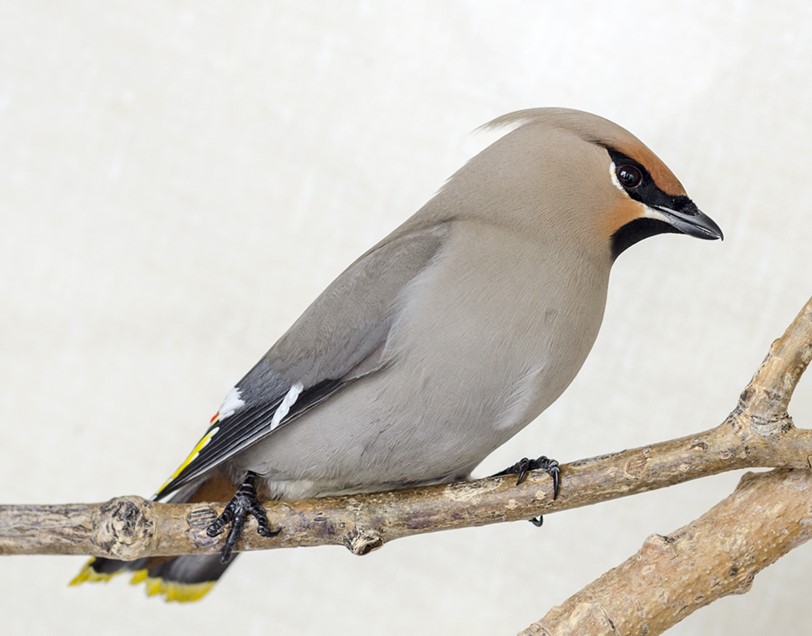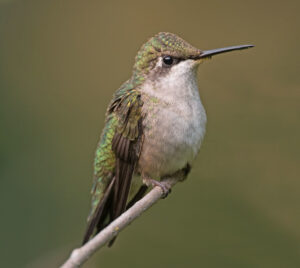By Julia Gaume
Waxwing birds are a type of passerine songbird named for the presence of waxy tips on the wings of many species (Smithsonian’s National Zoo & Conservation Biology Institute, n.d.). Alberta is home to two different waxwing species: Bohemian waxwings and cedar waxwings. Although you may find both kinds of birds on the berry trees in your backyard, there are many key differences you can use to differentiate between them (Kaufman, 2022).
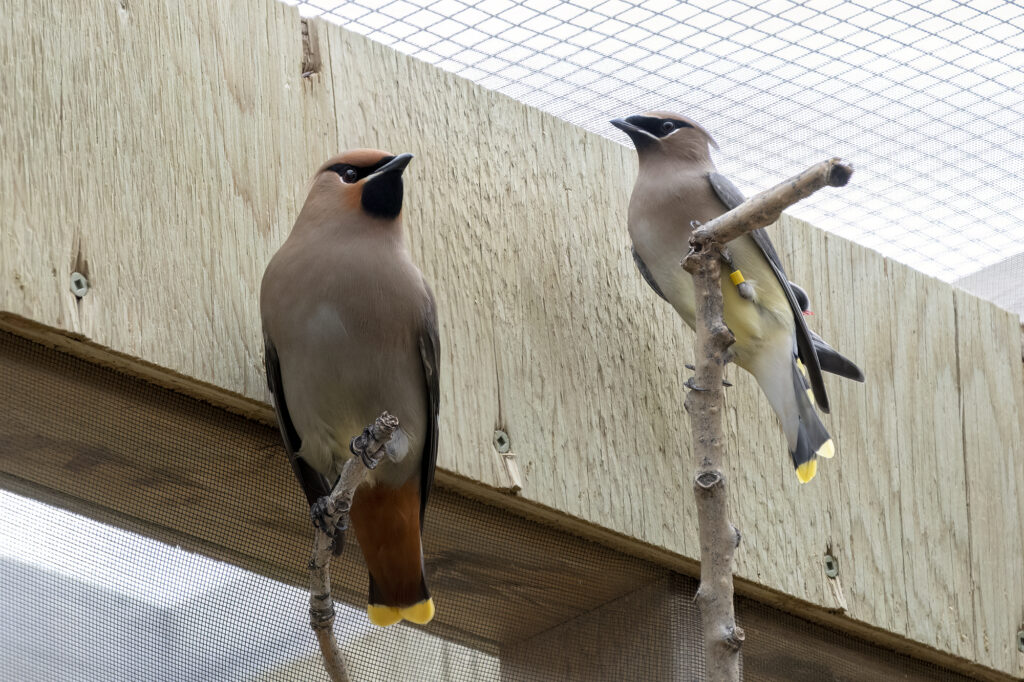
Differentiating Species
The most notable difference between these two birds is the time of year that they are present in Alberta; Bohemian waxwings are present during the winter months, and cedar waxwings are present during the spring or summer months (Lefebvre, 2018).
You can also tell these waxwings apart based on their physical appearance. Overall, Bohemian waxwings are more colourful than cedar waxwings. Although both have yellow-tipped tails, the underside of a Bohemian waxwing tail is a rusty orange colour, whereas cedar waxwing tails are white (Birdfact, 2022). The facial colour of these waxwing is also different, with Bohemians having a reddish peach colour blooming around their beaks and cedars having heads that are fully beige (All About Birds, n.d.).
Lastly, Bohemian waxwings are larger than cedar waxwings, measuring about 16 to 21 centimetres and 14 to 19 centimetres in length, respectively (Birdfact, 2022.)
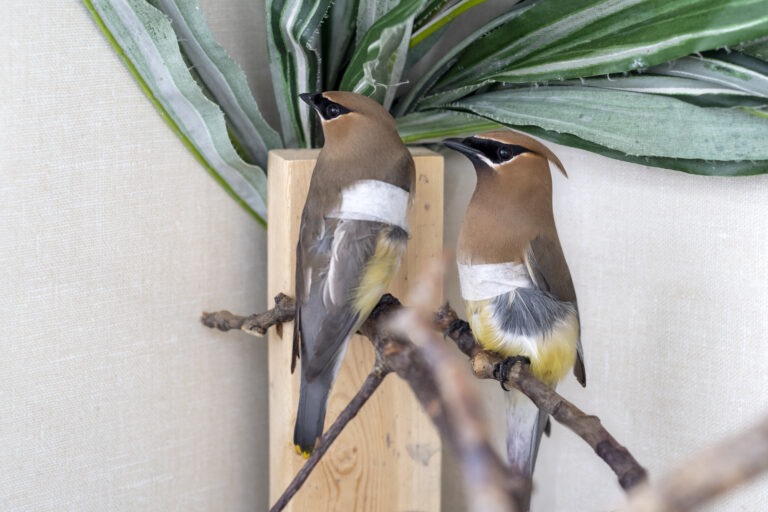
Common Reasons for Injuries
By far, the most prevalent injury waxwings endure is collisions with windows. These collisions can be detrimental, with a possibility of head or brain trauma, air sac punctures, broken bones and severe muscle injury to their flight muscles (Portland Audubon, 2021 & Wildlife Rescue Association, 2022).
How We Can Help
As waxwings (and the majority of bird species) have a hard time identifying glass window panes, making these windows more distinguishable will help reduce collision rates. This can effectively be done by treating windows using decals, tape, film, netting or screens (All About Birds, n.d.).
Window collisions can also happen during the night, when the light inside the building is much brighter than their night-time surroundings. A “Lights Out” initiative has been put into place in a couple large U.S. cities in which the public is encouraged to turn off non-essential lights in an effort to avoid pointing birds towards windows (All About Birds, n.d.).
If you do find a waxwing that collided with your window and is injured, we encourage you to reach out to AIWC at our wildlife hotline: 403-946-2361 for next steps.
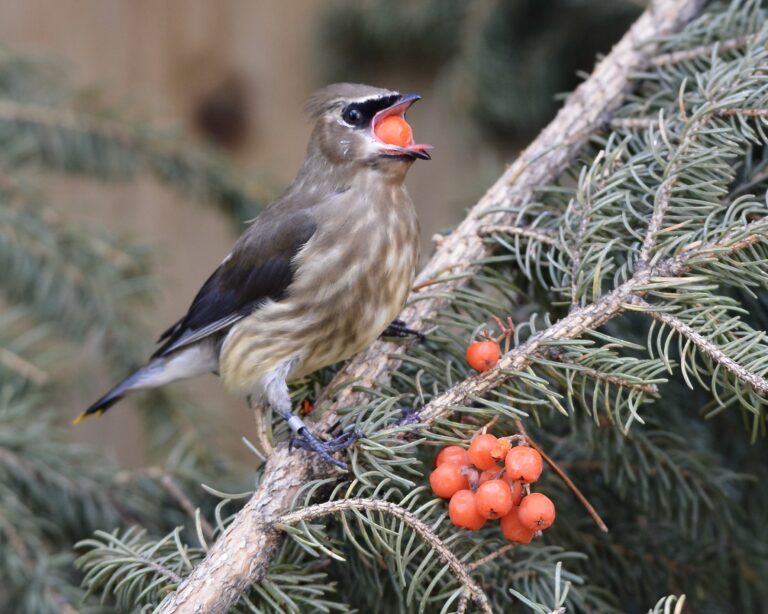
Bibliography
Smithsonian’s National Zoo & Conservation Biology Institute. “Cedar Waxwing.” Accessed October 24, 2023. https://s.si.edu/47fKQNF
Kaufman, Kenn & Kimberly. “Bohemian Waxwing vs Cedar Waxwing: ID Tips.” Birds & Blooms. October 31, 2022. https://www.birdsandblooms.com/birding/bird-species/songbirds/waxwing-id-tips/
Lefebvre, Bob. “Winter Waxwings of Calgary- Cedar and Bohemian.” Birds Calgary. March 24, 2018. https://birdscalgary.com/winter-waxwings-of-calgary-cedar-and-bohemian/
Birdfact. “Bohemian Waxwing or Cedar Waxwing: What Are the Differences?” November 7, 2022. https://birdfact.com/articles/bohemian-waxwing-vs-cedar-waxwing
All About Birds. “Bohemian Waxwing: Identification.” Accessed October 25, 2023. https://www.allaboutbirds.org/guide/Bohemian_Waxwing/id
Sekhon, Vindi. “Strike Two for Sociable Birds.” Wildlife Rescue Association. July 22, 2020. https://www.wildliferescue.ca/2020/07/22/strike-two-for-sociable-birds/
Portland Audubon. “Patient of the Week: Tale of Two Tails, Cedar Waxwings Recuperate Together.” December 16, 2021. https://bit.ly/47wWOlJ
All About Birds. “Why Birds Hit Windows- And How You Can Help Prevent It.” Accessed October 26, 2023. https://bit.ly/3QIcXxI

